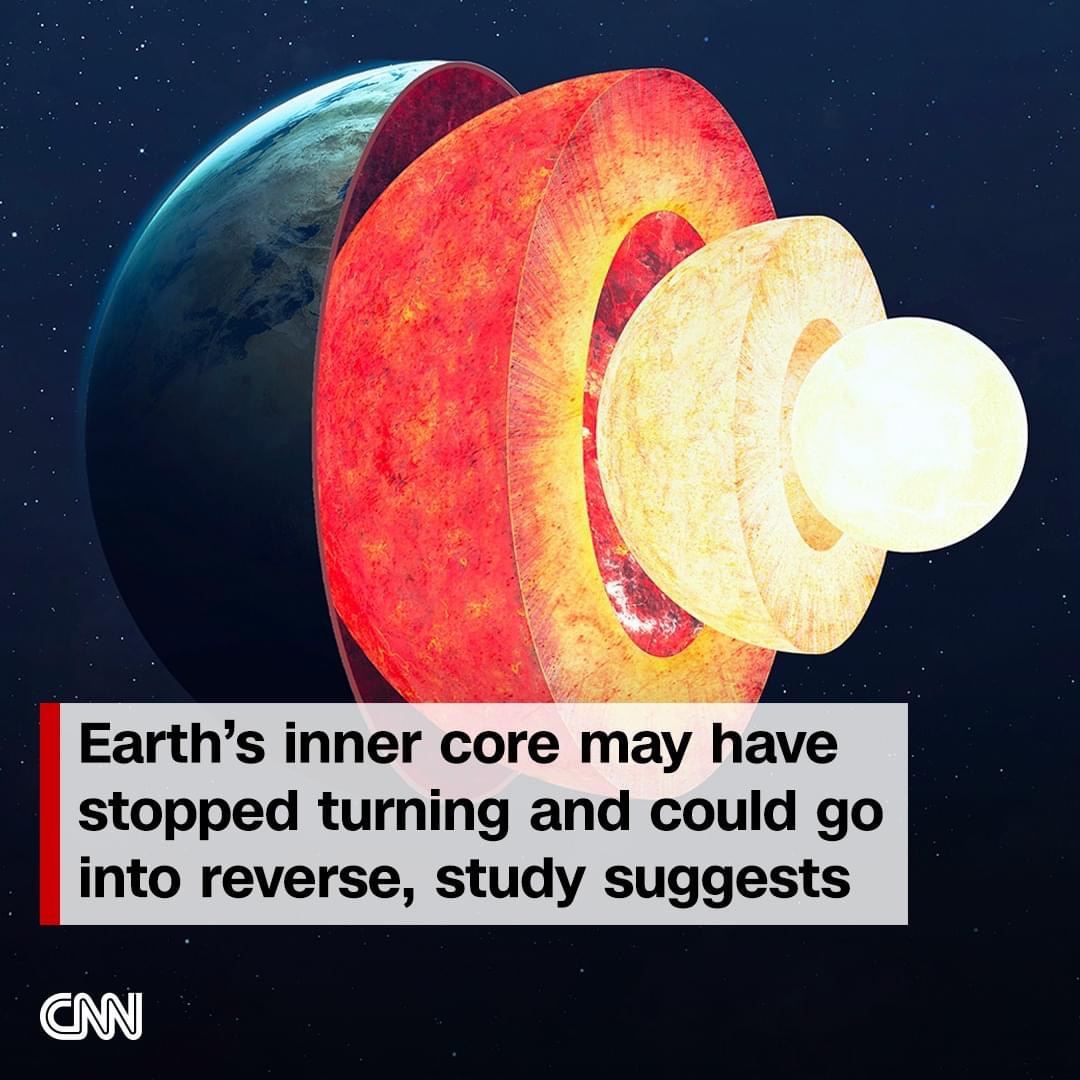The rotation of Earth’s inner core may have paused and it could even go into reverse, new research suggests.
The Earth is formed of the crust, the mantle and the inner and outer cores. The solid inner core is situated about 3,200 miles below the Earth’s crust and is separated from the semi-solid mantle by the liquid outer core, which allows the inner core to rotate at a different speed from the rotation of the Earth itself.
With a radius of almost 2,200 miles, Earth’s core is about the size of Mars. It consists mostly of iron and nickel, and contains about about one-third of Earth’s mass.
In research published in the journal Nature Geoscience on Monday, Yi Yang, associate research scientist at Peking University, and Xiaodong Song, Peking University chair professor, studied seismic waves from earthquakes that have passed through the Earth’s inner core along similar paths since the 1960s to infer how fast the inner core is spinning.
What they found was unexpected, they said. Since 2009, seismic records, which previously changed over time, showed little difference. This, they said, suggested that the inner core rotation had paused.
“We show surprising observations that indicate the inner core has nearly ceased its rotation in the recent decade and may be experiencing a turning-back,” they wrote in the study.
“When you look at the decade between 1980 and 1990 you see clear change but when you see 2010 to 2020 you don’t see much change,” added Song.
The spin of the inner core is driven by the magnetic field generated in the outer core and balanced by the gravitational effects of the mantle. Knowing how the inner core rotates could shed light on how these layers interact and other processes deep in the Earth.
However, the speed of this rotation, and whether it varies, is debated, said Hrvoje Tkalcic, a geophysicist at the Australian National University, who was not involved in the study,
“The inner core doesn’t come to a full stop,” he said. The study’s finding, he said, “means that the inner core is now more in sync with the rest of the planet than a decade ago when it was spinning a bit faster.”
“Nothing cataclysmic is happening,” he added.
Song and Yang argue that, based on their calculations, a small imbalance in the electromagnetic and gravitational forces could slow and even reverse the inner core’s rotation. They believe this is part of a seven-decade cycle, and that the turning point prior to the one they detected in their data around 2009/2010 occurred in the early 1970s.
Song and Yang agreed that more research was needed.
Studying the Earth’s core
Tkalcic, who dedicates an entire chapter of his book to the inner core rotation, suggested the inner core’s cycle is every 20 to 30 years, rather than the 70 proposed in the latest study. He explained why such variations occur and why it was so difficult to understand what happens in the innermost reaches of the planet.
“The objects of our studies are buried thousands of kilometers beneath our feet,” he said.
“We use geophysical inference methods to infer the Earth’s internal properties, and caution must be exercised until multi-disciplinary findings confirm our hypotheses and conceptual frameworks,” he explained.
“You can think of seismologists like medical doctors who study the internal organs of patients’ bodies using imperfect or limited equipment. So, despite progress, our image of the inner Earth is still blurry, and we are still in the discovery stage.”
Credit: CNN












Leave a Reply